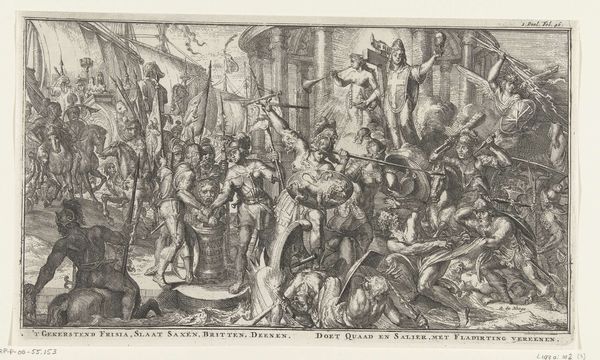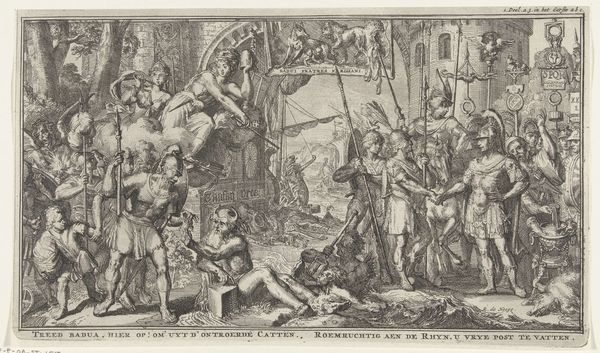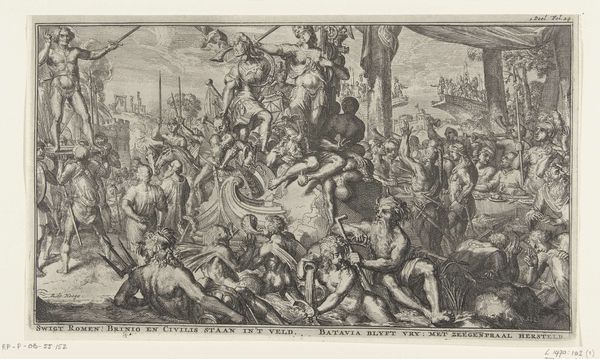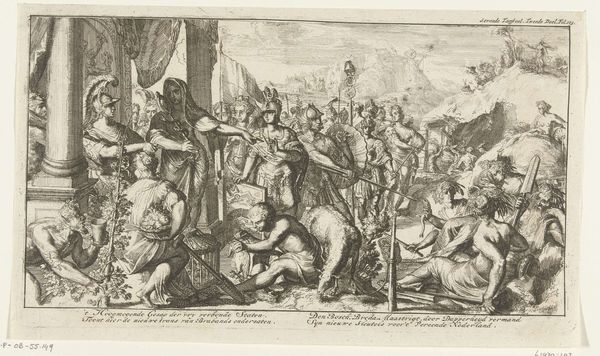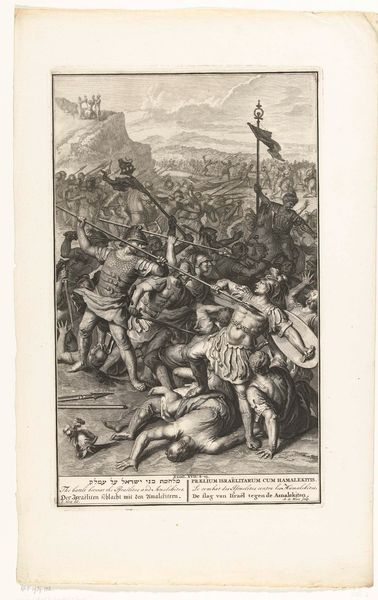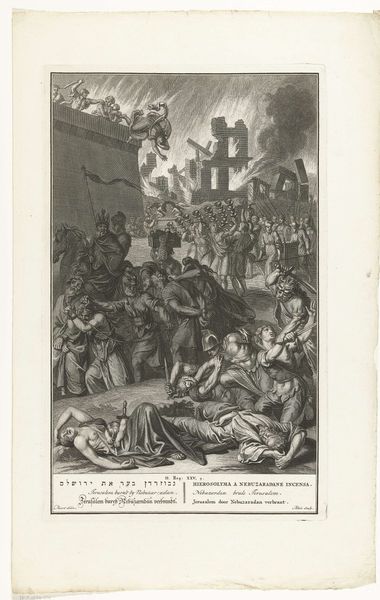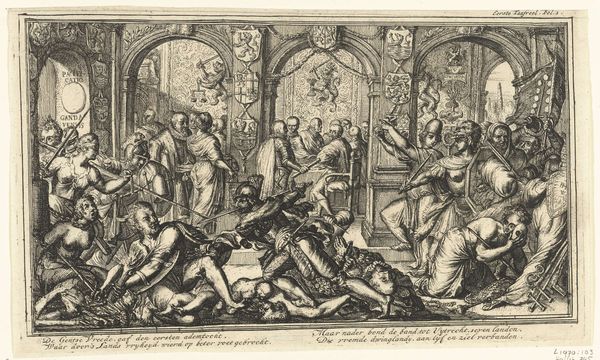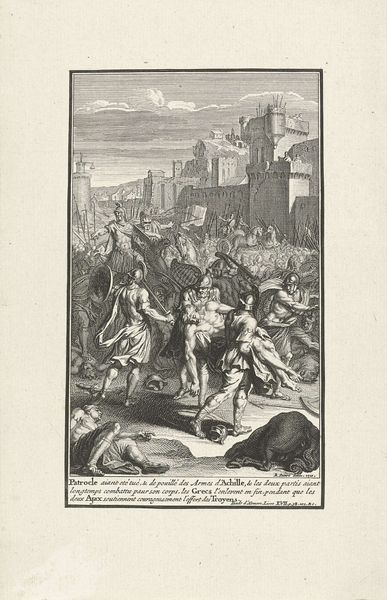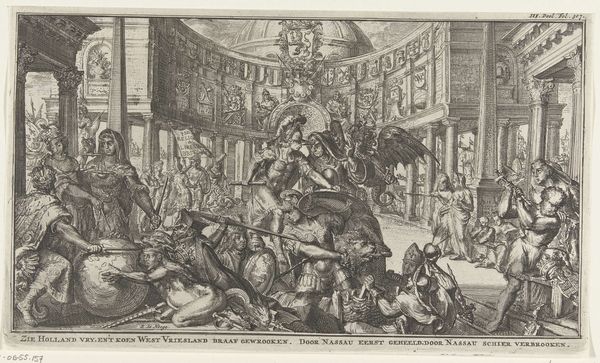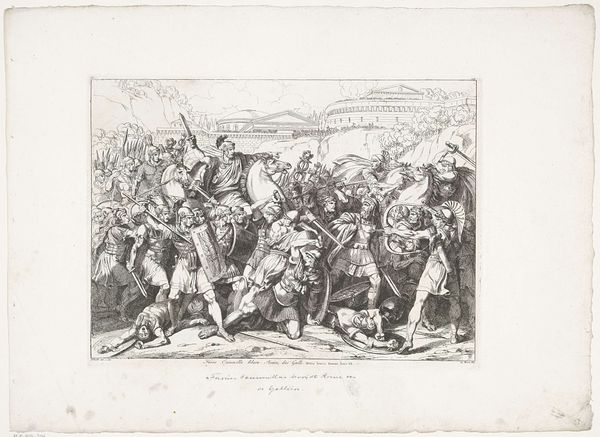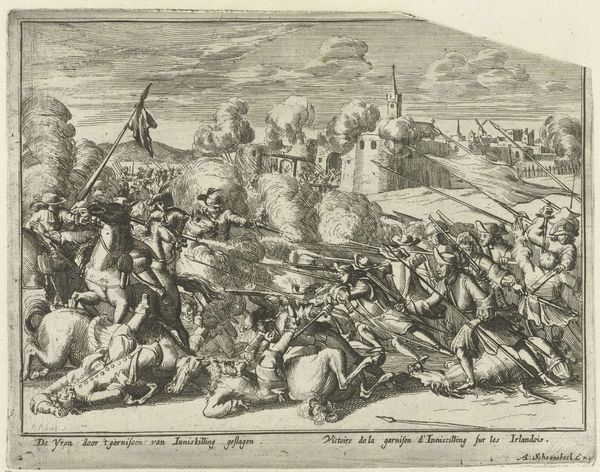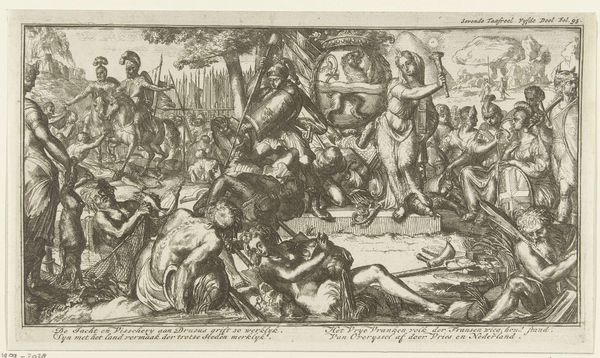
engraving
#
allegory
#
baroque
#
old engraving style
#
figuration
#
line
#
history-painting
#
engraving
Dimensions: height 180 mm, width 298 mm
Copyright: Rijks Museum: Open Domain
Curator: This intricate engraving by Romeyn de Hooghe, dating from 1704-1706, is titled "Allegory concerning the struggle with Bavaria and Burgundy." It resides here at the Rijksmuseum. What's your initial reaction to it? Editor: Overwhelming, to be honest. It's a teeming composition, so full of figures and detail that I'm immediately lost, though intrigued by the energy—feels almost feverish. The line work has this delicate yet frantic quality. Curator: Well, consider the period. De Hooghe, a key figure in the Dutch Golden Age, produced this engraving during the War of the Spanish Succession. This artwork serves as political propaganda, reinforcing the Dutch Republic’s stance amidst complex alliances and conflicts. Editor: So it's basically spin. Still, there's a weird power in its crowded, theatrical composition. I’m drawn to the central figures—almost like a classical tableau vivant—a statue being crowned, watched over by watchful combatants? And what's up with the strange winged figures in the top corner? Is this supposed to be glorious or terrifying? Curator: Allegory was a language then, immediately readable. Note how Holland is personified by the heroic female figure at the bottom, protected despite the turmoil surrounding her. The central crowned figure symbolises Dutch liberty, sustained by military victories despite the ongoing struggles against Bavarian and Burgundian forces. The artist also challenges traditional boundaries, portraying warfare with nuanced political commentary, appealing to national sentiment. Editor: I suppose looking at it as a comic book of its time, reporting the war like a particularly excitable journalist, makes sense. All those little guys firing arrows and brandishing pikes make me think more about the everyday grit than high strategy, like it pulls nobility down to earth, while giving it the bombastic flavor. What can we learn about materials and printing based on close scrutiny of this artwork? Curator: The scale and the technique are vital. Engravings, allowing for multiple prints, became critical for disseminating political ideas swiftly and broadly. The level of detail achievable, even on a relatively small copperplate, indicates not just De Hooghe's skill, but the sophisticated industry supporting print production. Each line etched deep signifies deliberate decisions aimed toward persuading public thought about conflict, leadership, and Dutch identity during its time. Editor: It’s interesting to see how “craft” intertwines so deeply with political agenda here. Perhaps now I do perceive how something functional can turn sublime and something as direct and communicative as print can express so much mood in one fell swoop, blending baroque pomp with what now looks very pointed satirical comment. I appreciate the insight.
Comments
No comments
Be the first to comment and join the conversation on the ultimate creative platform.
